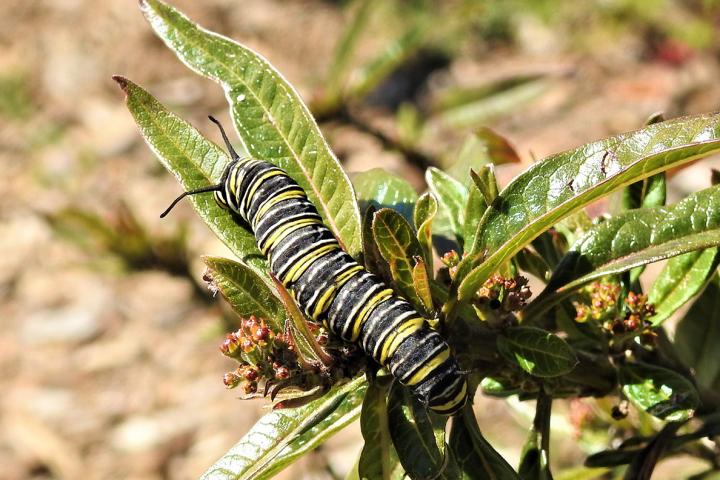
Credit: WSU
PULLMAN, Wash. — A count of the Western Monarch butterfly population last winter saw a staggering drop in numbers, but there are hopeful signs the beautiful pollinators are adapting to a changing climate and ecology.
The population, counted by citizen scientists at Monarch overwintering locations in southern California, dropped from around 300,000 three years ago to just 1,914 in 2020, leading to an increasing fear of extinction. However, last winter large populations of monarchs were found breeding in the San Francisco and Los Angeles areas. Prior to last winter, it was unusual to find winter breeding by monarchs in those locations.
“There’s more to it than just counting overwintering butterflies,” said David James, an associate professor in Washington State University’s Department of Entomology. “It seems that Monarchs are evolving or adapting, likely to the changing climate, by changing their breeding patterns.”
The larger numbers of reported sightings of winter breeding monarchs around the San Francisco Bay area prompted James to write a new commentary article in the journal Animal Migration.
The only way to count breeding populations last winter was to look at online citizen scientist observations, supported by limited field work, James said.
“There has been a huge increase in caterpillars in the Bay area, indicating that those populations are breeding,” he said. “The data are limited and preliminary, but we think the population is at least double what has been reported. However, it’s hard to tell since they’re dispersed over much of California.”
Past becomes present
James said this pattern of Monarch butterflies adapting looks familiar to him because he saw something similar while working on his Ph.D. dissertation over 40 years ago in Sydney, Australia.
In the late 1970s, the Monarch population in Australia saw huge declines. Scientists thought it was due to habitat loss, a common guess at one factor causing population declines in the western U.S. now.
“In Australia, Monarchs haven’t gone extinct,” James said. “They’ve just adapted and moved along with a smaller population. And there’s no effort to preserve them there because they aren’t a native species. They’re just very resilient.”
Sunnier outlook
Though the declining population is a concern, James believes Monarchs in the western U.S. will experience a similar plateau and not go extinct.
“San Francisco is very similar, climate-wise, to the area around Sydney,” James said. “And seeing this winter breeding, which is something new we saw in Australia in the late 1970s, leads me to think that Monarchs will adapt well to the changing climate in the western US.”
He is now working with citizen scientists to collect more data on winter breeding in California that can show this evolution and adaptability.
“The Monarch is like the cockroach of butterflies,” James said. “It’s very persistent and adaptable all around the world. The population decline is very worrying, but I remain optimistic that it will persist in the western US, although maybe at lower levels than before.”
Why Monarchs matter
Monarchs are iconic and very popular, basically the poster insect when anyone thinks about butterflies. Their large orange wings with black accents are immediately recognizable. They’re also important pollinators all along their migration routes, which in the western U.S. is basically from the Pacific Northwest to southern California. The loss of habitat for their favored milkweed is one reason for their dramatic population decline.
“Beyond their beauty is their role in ecology,” James said. “They pollinate and they are also an important part of the food chain. There’s a whole range of reasons why people care about them and don’t want them to go extinct.”
James is continuing his long-running Monarch tagging program, in which the butterflies are raised and tagged by people in the Northwest, including inmates at a prison, then released so they can migrate south for winter. He thinks he’ll find more tagged monarchs around the Bay area in breeding, instead of in non-breeding overwintering colonies, as happened last winter.
He plans to work with citizen scientists to collect and crunch the data to come to solid scientific conclusions. Until then, he maintains his optimism about how well these butterflies adapt.
“We don’t know if this adaptation will continue and how successful it will be,” James said. “The western Monarch population is quite precarious right now. It’s at a tipping point, and something is happening. We need to do more work to find out exactly what is happening.”
###
Media Contact
David James
[email protected]
Original Source
https:/
Related Journal Article
http://dx.




